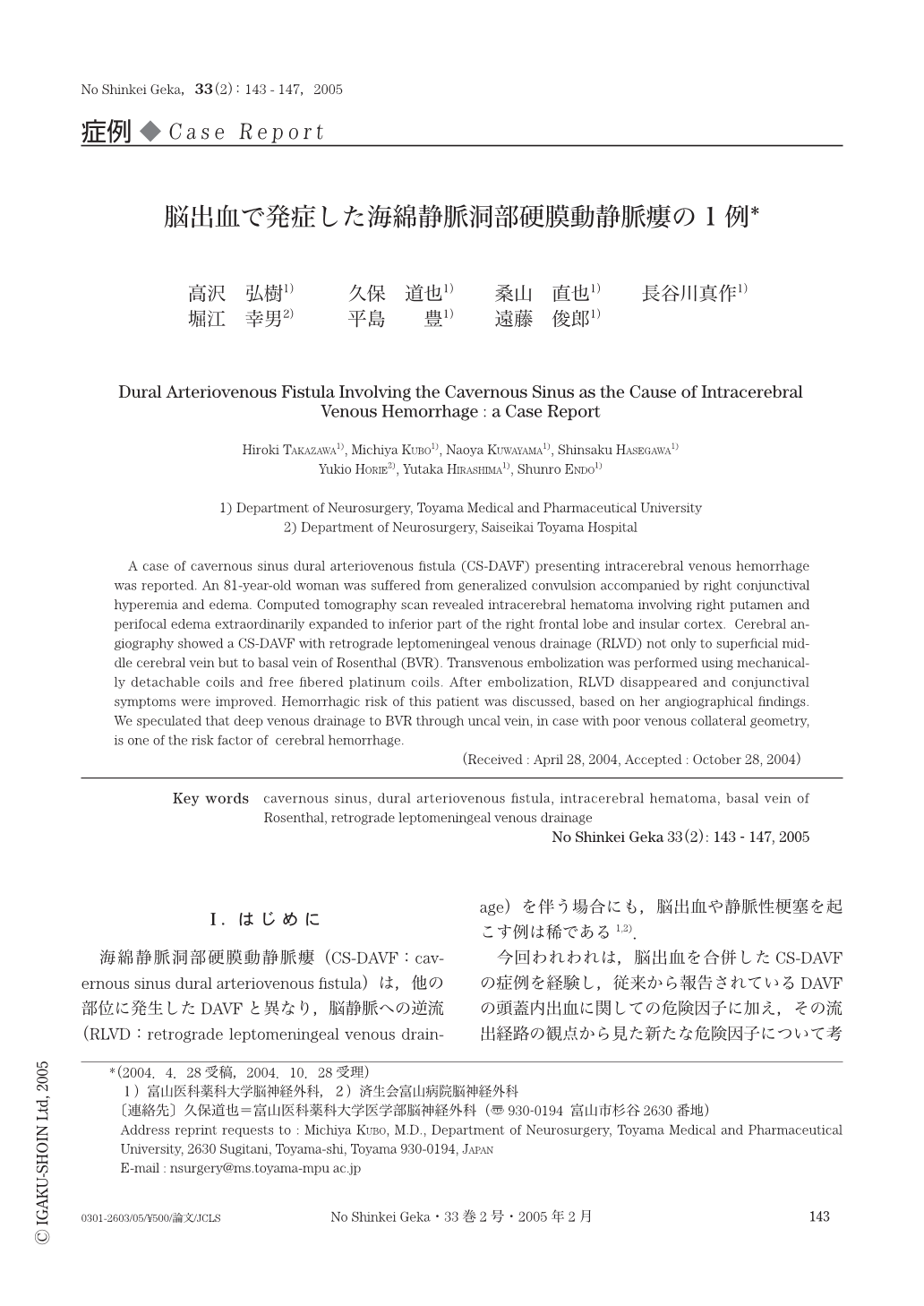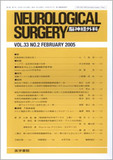Japanese
English
- 有料閲覧
- Abstract 文献概要
- 1ページ目 Look Inside
- 参考文献 Reference
Ⅰ.はじめに
海綿静脈洞部硬膜動静脈瘻(CS-DAVF:cavernous sinus dural arteriovenous fistula)は,他の部位に発生したDAVFと異なり,脳静脈への逆流(RLVD:retrograde leptomeningeal venous drainage)を伴う場合にも,脳出血や静脈性梗塞を起こす例は稀である1,2).
今回われわれは,脳出血を合併したCS-DAVFの症例を経験し,従来から報告されているDAVFの頭蓋内出血に関しての危険因子に加え,その流出経路の観点から見た新たな危険因子について考察を加えた.
A case of cavernous sinus dural arteriovenous fistula (CS-DAVF) presenting intracerebral venous hemorrhage was reported. An 81-year-old woman was suffered from generalized convulsion accompanied by right conjunctival hyperemia and edema. Computed tomography scan revealed intracerebral hematoma involving right putamen and perifocal edema extraordinarily expanded to inferior part of the right frontal lobe and insular cortex. Cerebral angiography showed a CS-DAVF with retrograde leptomeningeal venous drainage (RLVD) not only to superficial middle cerebral vein but to basal vein of Rosenthal (BVR). Transvenous embolization was performed using mechanically detachable coils and free fibered platinum coils. After embolization, RLVD disappeared and conjunctival symptoms were improved. Hemorrhagic risk of this patient was discussed,based on her angiographical findings. We speculated that deep venous drainage to BVR through uncal vein, in case with poor venous collateral geometry, is one of the risk factor of cerebral hemorrhage.

Copyright © 2005, Igaku-Shoin Ltd. All rights reserved.


